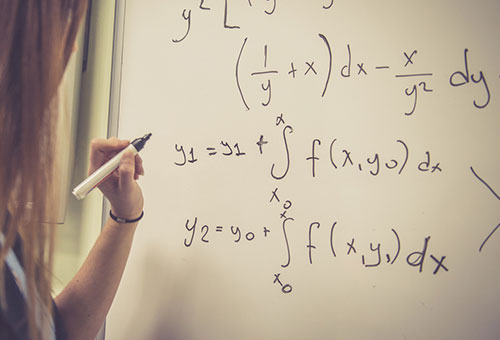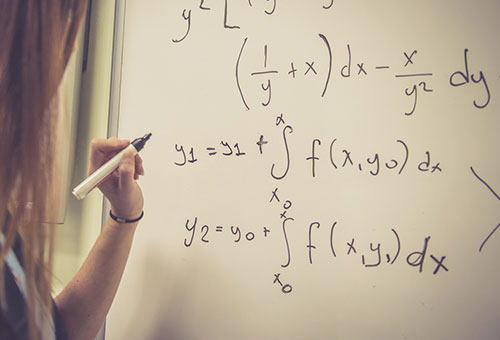Spring registration is now open. Online and in-person classes are available. Sign up for classes today!CLASSES
Take a class at Fox Valley Tech for fun, personal enrichment or career development. Find classes in any location during any time of the day. We have hundreds of classes to fit your budget, schedule and learning style.
CATEGORIES
Sorry, no results were found. Please check back later.
Introduction to differential and integral calculus and plane analytic geometry; Limits, derivatives, and graphs of algebraic, trigonometric, exponential, and logarithmic functions; antiderivatives, the definite integral, and the fundamental theorem of calculus, with applications.
Designed for students of mathematics, science, and engineering. This course continues the study of analytic geometry and calculus. Topics included in this course are techniques of differentiation and integration of transcendental functions, analysis of infinite sequences and series, an introduction to first-order differential equations, parametric equations and derivatives of parametric curves, polar coordinates in the plane and integrals using polar coordinates, the analytic geometry of the conic sections, and iterated integration.
This course covers skills needed for success in Calculus and many application areas at the baccalaureate level. Algebra topics include the real and complex number systems, polynomials, exponents, radicals, solving equations and inequalities, relations and functions, systems of equations and inequalities, graphing, and conic sections. Trigonometry topics include the unit circle, trigonometric functions, graphs, identities, equations, inverse functions, solutions of triangles, complex numbers, polar coordinates, and vectors.
This course reviews key math concepts in algebra, geometry, trigonometry, measurement, and data. Topics include simplifying algebraic expressions, solving linear equations and inequalities with one variable, proportions, and percent applications, and working with geometric figures. It covers the Pythagorean Theorem, trigonometric ratios, and unit conversions between U.S. customary and metric systems. Data analysis focuses on organizing and summarizing data, central tendency, and measures of dispersion. Emphasis is on problem-solving, critical thinking, and logical reasoning.
Topics include: solving linear equations; graphing; percent; proportions; measurement systems; computational geometry; and right triangle trigonometry. Emphasis will be on the application of skills to technical problems. Successful completion of College Technical Mathematics 1A and College Technical Mathematics 1B is the equivalent of College Technical Mathematics 1.
Focuses on a wide range of calculation skills using a scientific calculator with an algebraic-entry method. Topics include elementary calculator operations, scientific notation, formula evaluation, measurement systems, rules of estimation and right trigonometry.
This course offers algebra content with applications and an introduction to functions and complex numbers. Content builds upon the arithmetic of real numbers by using variable equations to solve problems. Topics include graphing and finding algebraic solutions for linear equations and inequalities, quadratic, exponential, polynomial, radical, and rational equations.
Students taking Introductory Statistics display data with graphs, describe distributions with numbers perform correlation and regression analyses, and design experiments. They use probability and distributions to make predictions, estimate parameters, and test hypotheses. They draw inferences about relationships including ANOVA.
This course integrates algebraic concepts, proportions, percents, simple interest, compound interest, annuities, and basic statistics with business/consumer scenarios. It also applies math concepts to the purchasing/buying and selling processes.
Students will apply problem solving techniques from discrete mathematics. Topics include symbolic logic, sets, algebra and base number systems.




